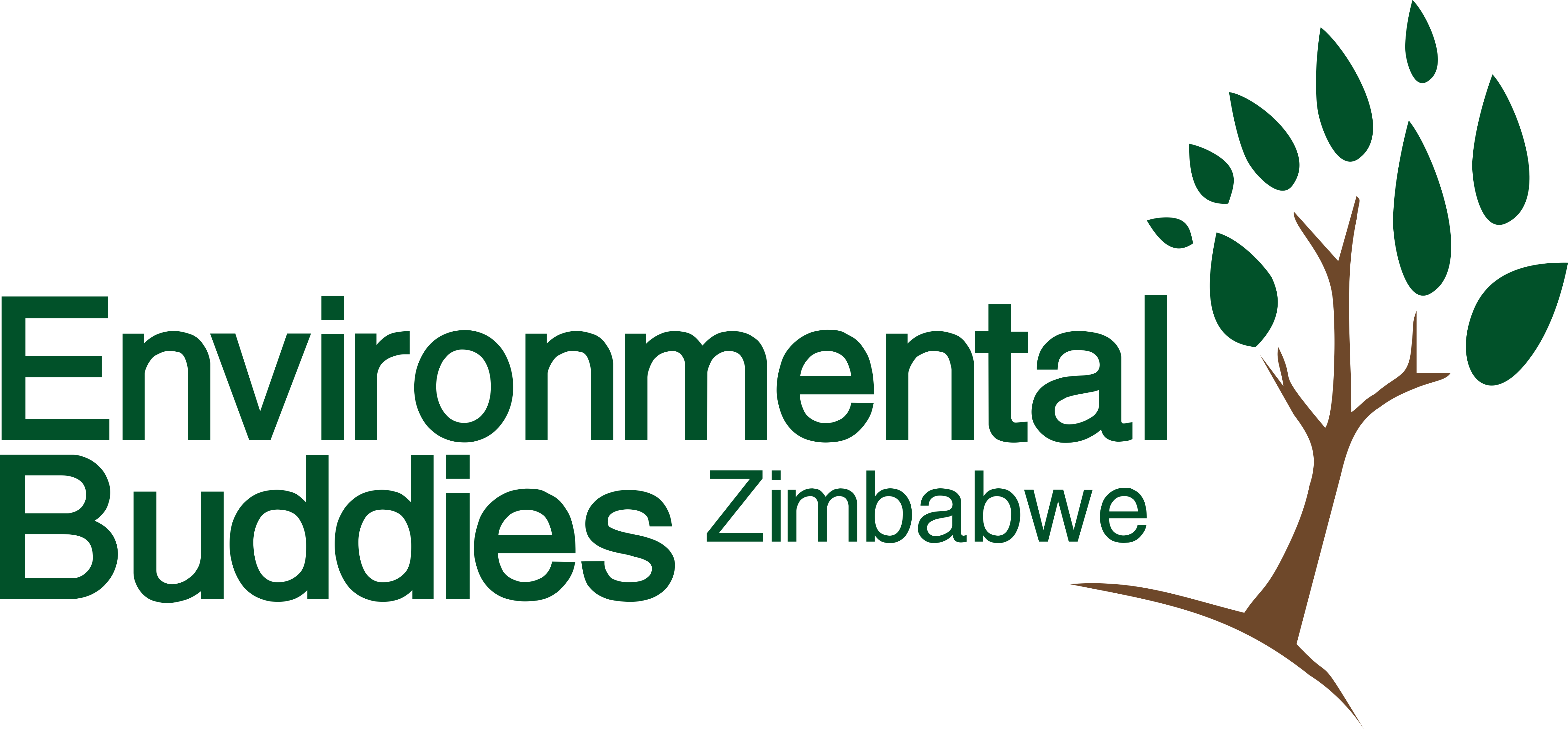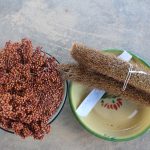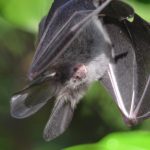Fire: Friend or Enemy?
In the evolution of ecosystems, fire has always been an important factor in the management of many forests, woodlands and other vegetation types. Fire ecology helps us understand the process of forest evolution, its benefits and dark traits. Although treated as a disturbance, fire differs from other environmental disasters such as floods and earthquakes, in that it feeds on complex organic molecules and converts them to organic and mineral products (Bond and Keeley, 2005). Calling fire a friend might seem ironic but fire is a top environmental supporter. It is needed to trigger natural processes, such as stimulating seed germination, cleaning up forests, manage pests, diseases and invasive species and provide habitat for a selected animal species.
What is Fire?
Fire is a chemical reaction that converts a fuel and oxygen into carbon dioxide and water. Fire can also be defined as an exothermic reaction because it produces heat. Enough times fire produces a flame which is the visible portion of fire. At a certain point in the combustion reaction, called the ignition point, flames are the visible portion of the fire. A Flame occurs when two gases react producing both heat and light.
Types of Fire
In a forest, fire comes in different sizes and shapes. The ecological importance of fire size varies with the ecosystem and different species in the ecosystem.
Surface fires: spread by fuels that are close to the ground such as grass or dead leaf and stem material. These can as either be head or back fires.
Crown fires: burn in the canopies of shrub and tree dominated associations. They only occur under extreme fire conditions.
Ground fires: burn soils that are rich in organic matter. This type of fire is often triggered by lightning.
Prescribed burning
Back in the day, the Shona tribe significantly viewed natural fires with either religion or ancestry. The impact of such fires was very minimal.
Since fire is an important management tool in forests we should never totally eliminate it. Instead, we need to manage and control it. Controlled burning, also known as prescribed burning, involves setting planned fires to maintain the health of a forest. Materials burned in a planned fire include dead grass, fallen tree branches, dead trees, and thick undergrowth.
Rule number one: burns must be scheduled for a time when the fire will not pose a threat to the public or to fire managers.
Rule number Two: The right conditions should be considered for prescribed burning. Weather conditions should be right to allow burning but not enable a fire to spread out of control.
Rule number three: Before a controlled burn is lit, a plan must be drawn up. This plan includes details on how big the fire will be, what it will burn, and what managers hope to accomplish with the fire. It also includes the weather and environmental conditions under which the fire will burn and any situations that might require the fire to be extinguished. Controlled-burn managers also map out how the fire will be set, how the smoke will be managed, how to inform the public, what protective equipment might be needed, and what fire fighting resources should be standing by.
While there is no doubt that these fires can threaten lives and property, and break down years and often decades of lush growth; all is not lost. There can be hidden benefits that come with forest fires. There are many potential benefits to be gained from using prescribed burning as a tool in forest resource management, including the reduction of hazardous fuels; the preparation of sites for seeding or planting; the improvement of wildlife habitat; the disposal of logging debris; disease control; etc.
Controlled burns are lit for a number of reasons.
Fire benefits
1. Soil health and fertility
When vegetation is burned, the nitrogen it contains is released into the atmosphere, but elements such as potassium and phosphorus remain in the ash and are quickly recycled into the soil. Fire returns nutrients to the soil in the ashes of vegetation that could otherwise take years to decompose. Fire is popular in subsistence farming in Zimbabwe, where after harvesting and during land preparation crop stalks and young pruned twigs and trees are burn to prepare for the next planting season. Fire increases soil fertility, a benefit that has been exploited by farmers for centuries.
2. Forest regeneration
In addition, fire can be rejuvenating. In the absence of fire, forest waste and debris form a layer on top of the soil. This coating of dead organic matter choke outgrowth of smaller or new plants. When humans perform a prescribed burn, the goal is to remove that layer of decay in a controlled manner, allowing the other, healthy parts of the ecosystem to thrive.
Fire can be efficient management tool for clearing land, removing debris and reducing fuel loads, for example, when a fire burns through bushland, it clears thick undergrowth and opens up the canopy so sunlight can reach the forest floor, encouraging the germination and regrowth of native vegetation. The additional sunlight and open space in a forest can help young trees and other plants start to grow. Post burn sprouts indicate fire adaptation of plant species.
Local people take advantage of prescribed fire as it provides nutritious regrowth to their livestock and wild animals. For Hwange National Park and other National Parks, periodic and planned burning has been necessary to create a balance in the floral biodiversity of the ecosystem.
3. Preventing wildfires
By ridding a forest of dead leaves, tree limbs, and other debris, a prescribed burn can help prevent a destructive unplanned wildfire. Regularly applied fire can reduce the intensity of an unplanned fire. Without regular controlled burning, leaf litter builds up over time providing lots of fuel. If an unplanned fire should occur, it will be much more severe and harder to control where a lot of fuel has built up.
4. Helps with seed dispersal and germination
Some germination in plants is triggered by heat. Hard-seeded plant species usually have a physical seed coat barrier that slows down the germination process. Treatment of such seeds with fire breaks the dormancy and speeds up the germination process. Several plants actually require fire to move along their life cycles. For example, seeds from many pine tree species are enclosed in pine cones that are covered in pitch, which must be melted by fire for the seeds to be released. The Australian eucalyptus also needs fire for regeneration. After a veldt fire the seed capsules open up and seeds thrive in freshly burned, ash rich soils. Other trees, plants, and flowers, like certain types of lilies, also require fire for seed germination.
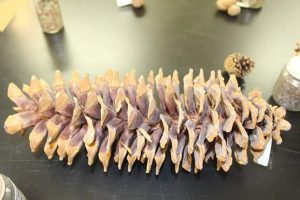
Pinecone
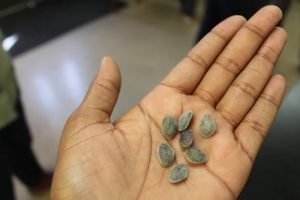
Pine Seeds
5. Fire makes food available for animals
Animals also need on fire. Fire can also be used to increase wildflower diversity in grasslands, which benefits butterflies, moths and other pollinators, providing a variety of food sources throughout the growing season. Diverse grasslands also provide the different types of vegetation and structure that pollinators need during different times in their life-cycles.
The sole food source for the endangered Karner blue butterfly caterpillar (Lycaeidesmelissasamuelis) is a plant called wild lupine (Lupine perennis). Wild lupine requires fire to maintain an ecosystem balance in which it can thrive. Without fire, the lupines do not flourish, and the caterpillars cannot consume enough food to undergo metamorphosis and become butterflies. In this way, healthier, post-burn plant populations generally have broad food web effects that trickle up to the foragers and other animals in the ecosystem. In addition forest debris built up might prevent organisms within the soil from accessing nutrients or block animals on the land from accessing the soil.
Crevice of burnt trees that are still standing can be havens for insects and worms that feed birds and small mammals.
6. Control pests, diseases and invasive plant species
Fires can help rid an ecosystem of invasive species that have adapted to regular veldt fires. While animals and plants within fire-prone ecosystems have adapted to thrive within a cycle of wildfires, invasive plants and animals are less likely to recover from prescribed burning and could thus be controlled or even eradicated from the ecosystem they invaded. Plants such as Lantana Camara can be eliminated by use of a controlled fire that might include uprooting them first and set them on fire. Fires free these plants from competition with invasive weeds and eliminate disease or droves of insects that may have been causing damage to the forests. Controlled burns can also reduce insect populations and eradicate insect outbreaks such as ticks and mosquitoes.
7. Provide habitat for animals
The remnants of burnt trees, with hollowed out logs, offer attractive habitats for birds and mammals seeking shelter and nesting. Most wood pecker bird species prefer to make home in a newly burnt forest or trees.
Animals and plants of the Savanna are adapted not only to survive fire events, but some actually need them. In Zimbabwe the Temminck’s courser bird is well-known for laying its dark colored ash-black eggs in the burnt bushes and grass of the African savannah.
The burnt ground provides the perfect home and camouflage needed to protect the eggs from predators. Temminck’s courser bird is a long legged bird in the pratincole and courser family that lives in sub-Saharan Africa.

Temminck’s Courser eggs
Fallen burnt trees also provide new homes for smaller animals, especially reptiles. Similarly, animals that use pine trees and Australian Eucalyptus for their homes benefit from the germinating powers of fire.

Temminck Courser Bird
FIRE A FRIEND OR A FOE: It is always difficult to witness the seeming destruction of leafy green forests by a ravaging fire but it may ease our minds a little if we can remember that fire is essential for most ecosystem life. Even in the ambers, there is the spark of new life
